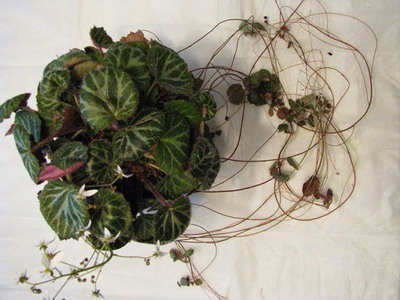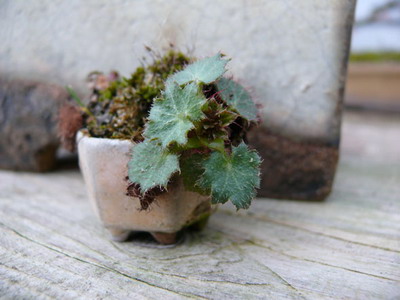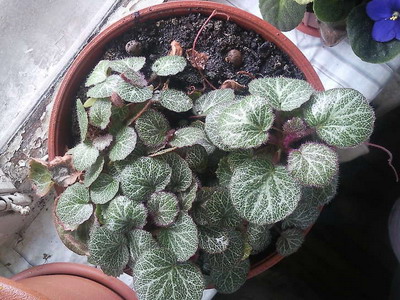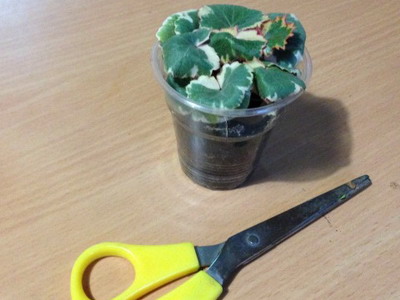One of the most popular ornamental plants in widespread use is the saxifrage . Due to the fact that in its natural habitat this plant grows in rock crevices, at the foot of mountains and in lowlands with rocky soil, it is most often used to decorate alpine slides, rockeries and retaining walls. However, it feels quite comfortable in the flower beds.
Growing saxifrage from seeds with the aim of further using these plants to decorate a garden, flower bed or rock garden is quite accessible even to beginner flower growers at home .

Advantages of the saxifrage plant
The main advantages of this attractive flower are not only its beauty, but also qualities such as durability and compact appearance. In addition, high productivity can be safely attributed to the number of advantages, i.e. a sufficiently large number of seeds that can be collected from one plant.

However, it blooms only in the second year of its growth in a permanent place.
At the same time, planting material retains its germination capacity for 2-3 years. Saxifrage seeds are small and black, at home they grow from the soil, as a rule, as early as 6-8 days. Plants can be annuals and perennials, the height of the flower stalks ranges from 2-3 cm to half a meter or more. As for the color, the buds of this flower can be white, blue, pink and even red.
The undoubted advantage of growing saxifrage is a huge variety of species and varieties, which allows you to decorate a flower bed or garden to your taste. The saxifrage family has about 400 varieties that grow throughout the world and can be house (indoor) or outdoor plants.
Saxifrage at home feels great on well-lit windowsills, but without direct sunlight.

Growing saxifrage at home
To grow saxifrage from seeds at home, you need to prepare as early as March-April. Small black seeds of a plant need preliminary, slightly unusual, preparation before planting. It consists in their processing by cold (not frost).
Surprisingly, however, indoor saxifrage, the photo of which is presented below, grows most efficiently after such processing:


To do this, a little light, slightly moistened soil is placed in a small container and seeds are placed on its surface.
A container with soil and seeds, covered with plastic wrap, is placed in the refrigerator for 2 weeks.
After the time allotted for cooling, the seeds are placed on the windowsill for heating and germination. In this case, you do not need to open the film yet.
How to grow saxifrage from seeds at home? For high-quality and uniform germination of seeds, a normal temperature regime is needed.
The air and soil temperature during the first two weeks after sowing should not fall below 18 degrees and rise above 20.

The first shoots can be observed within a week after sowing. The first leaves of saxifrage at home, like many other plants, are very weak. Normal leaves appear in 10-12 days.
During this period, the seedlings should be picked in separate pots, it is best if they are peat.

Subsequently, with these pots, grown and strengthened seedlings can be relocated to open ground or to a pot.
Despite the fact that this plant is originally a wild perennial, modern varieties and hybrids of this amazing flower can be grown as houseplants. Most often it is a wicker and variegated saxifrage.

Planting and caring for room saxifrage is not much different from the rules for growing street varieties. The saxifrage feels most comfortable in a cool, regularly ventilated area.

The plant is very unpretentious and does not need special growing conditions. North and west windows are ideal for indoor varieties. When placing the saxifrage in the southern or eastern rooms, care must be taken to protect its leaves from direct sunlight if it is located on the windowsill or place the flower away from the window.

Caring for room saxifrage consists in regular moderate watering, maintaining the optimum air temperature. In summer, the plant needs regular weekly top dressing. In winter, fertilizers are applied with a break of 3 weeks.
The prepared earth mixture for planting, growing room saxifrage and caring for it (a photo of the transplant process is given below) should contain components such as peat, sand, humus, leaf and sod land:


All listed components should be mixed in equal amounts.
Growing saxifrage in open ground
Growing this flower in open ground will not cause any difficulties. It responds well to the application of complex fertilizers, the first portion of which should be applied 7 days after transplanting to a permanent place in a flower bed or alpine hill.
In addition to fertilizing, young flowers need regular moderate watering, weeding the nearby soil and loosening it. It is important that watering is correct, since excess moisture has a detrimental effect on flowering bushes, they begin to rot and die.

If there is not enough moisture, the plant itself and its flowers will noticeably decrease in size, brown spots may appear on the leaves.
Provided that favorable conditions for growth are created, after a while the saxifrage grows and fills impressive areas with its shoots and prevents the growth of weeds. The flower feels best in partial shade, but it can also grow in sunny places, but in this case frequent watering will be required. Otherwise, the beautiful living carpet formed by this plant will be covered with bald spots.
After the saxifrage has faded, pruning of dry, faded stems should be done. This stimulates the growth of the plant and its further flowering.








